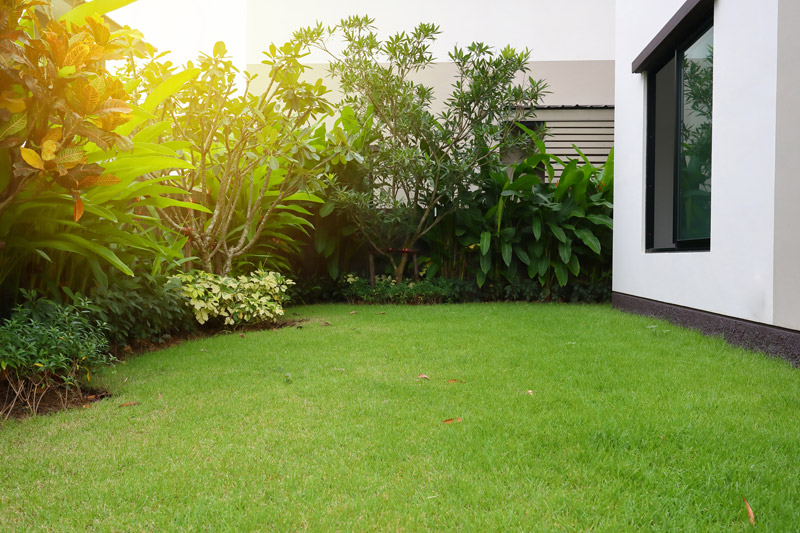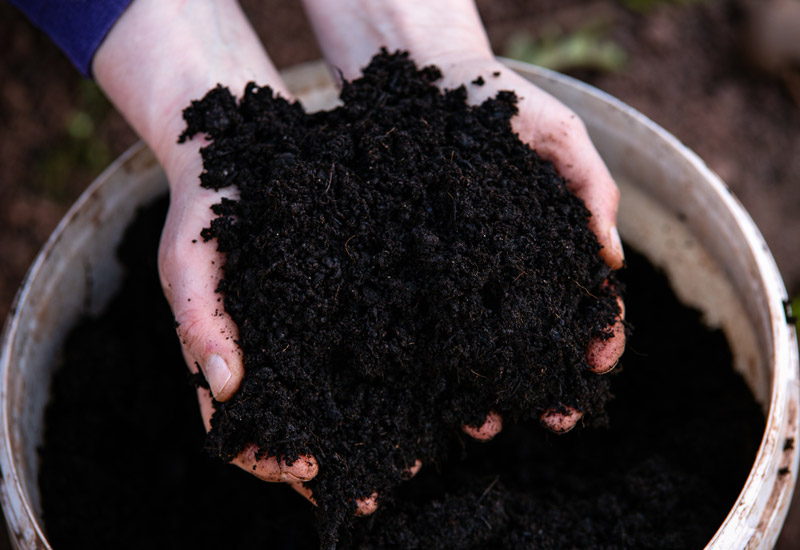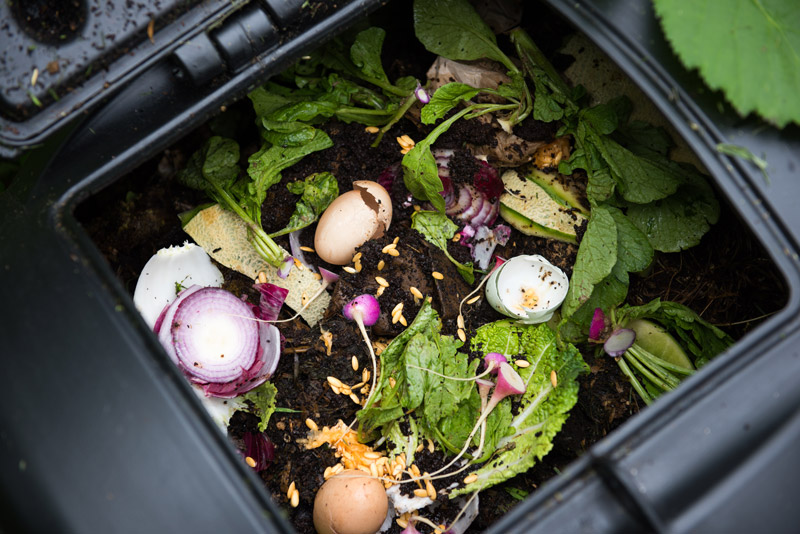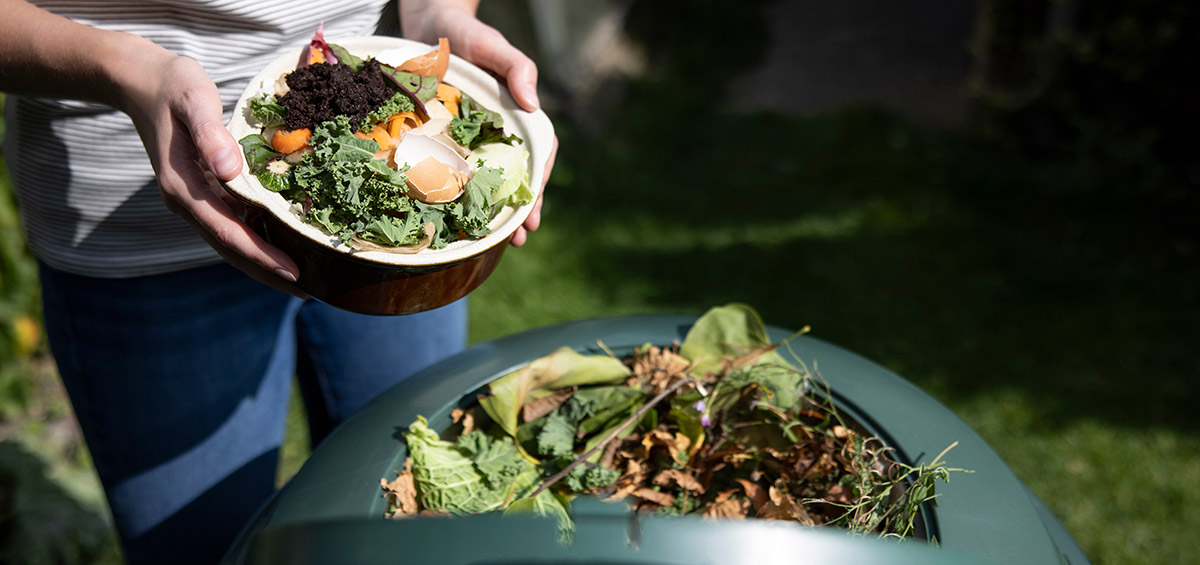Composting is a great way to recycle produce that would otherwise be considered waste and tossed in the rubbish bin. It is made up of the decomposed organic matter from veggie scraps and other foods, and is full of nutrients that make it a great fertilizer in planting soil. Making your own compost bin is a simple way to reduce food waste while also feeding your garden. DIY bins can be crafted from used food containers such as milk jugs or large quart-sized cans – get creative with your container!
Materials
- Container and lid – This can be anything from a milk jug to a mini or full-sized trash can
- Catch tray
- Soil
- Shredded newspaper
- Hammer and nails
- Power drill
- Scissors
Directions
2. Cover the catch tray with shredded newspaper.

4. Place the bin on top of the newspaper covered catch tray.
5. Fill the bin about a quarter of the way with soil.

7. Begin composting!

Tips to start your compost journey:
- When adding food scraps be sure they are as small as possible.
- Add shredded newspaper after adding food scraps, so that you may be sure to keep a wet vs. dry balance.
- Mix the compost at least once a week and add about one half a scoop of new soil so that the produce breaks down evenly.
- The bin should never give off a rotten smell, so if it does this means the compost may be off balance and the bin is in need of adjustments. This could be a need for more holes for air flow or additional pieces of newspaper dry out the mixture.
What NOT to Compost:
- Meat (includes poultry)
- Dairy
- Bones
- Food wrappers
- Plastic
What to Compost:
- Organic food scraps including fruits, vegetables, grains, etc.
- Small paper pieces including shredded newspaper, paper towels, napkins, etc.
- Coffee grounds
Once you’ve generated enough compost, use it in your garden. Scatter it around your plants to help them thrive!

